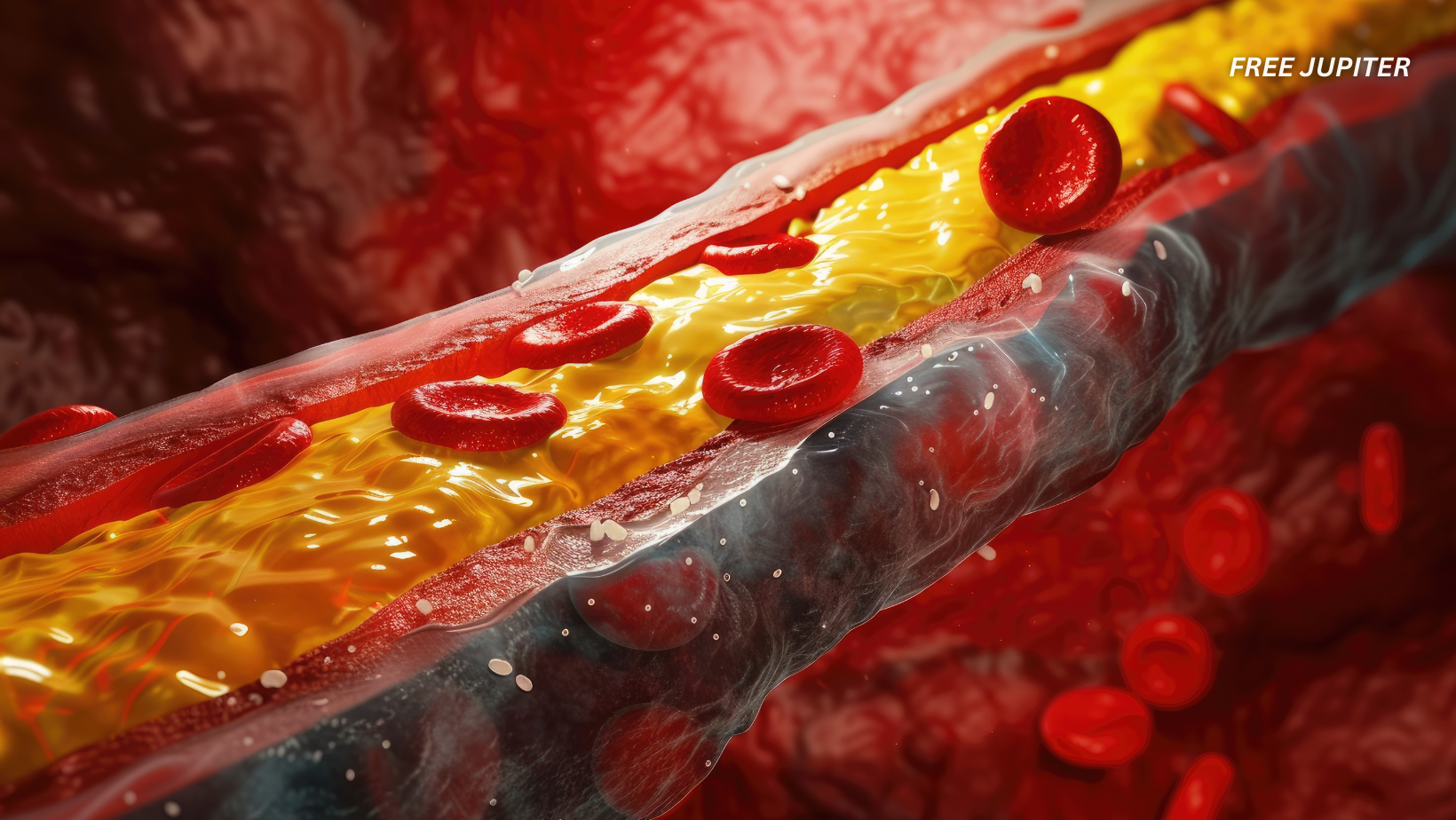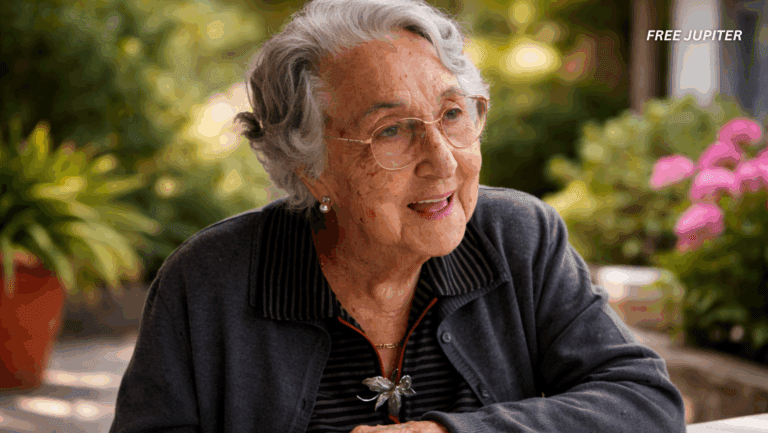Disclaimer: Content on FreeJupiter.com is for general information only and is not a substitute for professional medical advice. Always consult a qualified healthcare provider for guidance.
In a discovery that sounds like it belongs in a science fiction movie, scientists have uncovered a sneaky little enzyme in our bodies that could be quietly making us sicker than we realize. And here’s the kicker: turning this enzyme off might help protect us from some of the deadliest modern diseases—heart disease, diabetes, cancer, and even dementia.
That tiny troublemaker? An enzyme called IDO1. And scientists say that learning how to “flip the switch” on it could reset how our immune system handles cholesterol, possibly saving millions of lives.
The Problem With Cholesterol Isn’t Always What You Think
We’ve heard it a million times: “Avoid high cholesterol.” But what’s not always explained is that cholesterol itself isn’t the villain—our body actually needs it to build cells and make hormones. The real danger starts when cholesterol goes unregulated, especially when it builds up in places it shouldn’t—like the walls of your arteries.
And that’s where your immune system comes in, particularly a group of cells called macrophages. Their job is to patrol the body, gobble up bad stuff like bacteria, dead cells, and yes—excess cholesterol. They’re like your body’s microscopic janitors.
But here’s the catch: when your body is under chronic stress or battling long-term inflammation, these hardworking cells lose their mojo. They get overwhelmed and sluggish, no longer able to keep up with their cholesterol-clearing duties. That’s when cholesterol starts to pile up, leading to dangerous clogs in your arteries.
READ MORE:Alzheimer’s Might Not Be A Brain Disease After All: Scientists
Meet IDO1: The Enzyme That Hijacks Your Cholesterol Cleanup Crew
Enter the enzyme IDO1 (short for indoleamine 2,3-dioxygenase 1—try saying that five times fast). In a study led by Dr. Subhrangsu S. Mandal and his team at the University of Texas at Arlington, researchers found that this enzyme springs into action during inflammation and subtly sabotages your macrophages.
How? IDO1 kicks off a chain reaction that produces a molecule called kynurenine, which throws off how macrophages handle cholesterol. It’s like IDO1 gives the janitors a confusing new work order: “Ignore the cholesterol, just keep moving.” Naturally, things start to back up.
But here’s where it gets interesting: when researchers blocked IDO1 in lab tests, macrophages went right back to doing their job—vacuuming up cholesterol like pros. This small shift restored the balance in the immune system and opened a potential new front in the battle against chronic disease.
Inflammation: Friend Turned Foe
It’s worth understanding how inflammation ties into all this. Short-term inflammation is good—your body’s way of fighting injury and infection. That redness around a cut? That’s inflammation doing its thing. But when inflammation lingers for too long, it becomes less of a protector and more of a saboteur.
Chronic inflammation is increasingly linked to a long list of modern illnesses—heart disease, type 2 diabetes, Alzheimer’s, some cancers, and autoimmune conditions like rheumatoid arthritis. It can slowly and silently interfere with the body’s normal processes, like how it manages cholesterol.
And this is where IDO1 becomes especially dangerous. It gets activated by inflammation, and in turn, causes more problems—including cholesterol buildup—by disabling macrophages. It’s a vicious loop, and scientists believe that breaking it could be key to better health.
Not One But Two Culprits
As if IDO1 wasn’t enough, the researchers also identified a second enzyme that worsens the problem: nitric oxide synthase, or NOS. On its own, NOS helps produce nitric oxide, which your body needs to relax blood vessels and maintain healthy circulation. But in this case, it teams up with IDO1 in a not-so-heroic partnership.
Together, these two enzymes supercharge inflammation’s negative effects. When both are active, the body’s cholesterol regulation system gets even more out of whack. This discovery has led scientists to consider a dual-blocking approach, where drugs could be designed to shut down both enzymes simultaneously. Think of it as cutting the power to two faulty switches instead of just one.
READ MORE: A Rare Genetic Mutation Gave This Indonesian Tribe Electric Blue Eyes
What This Could Mean for You (and Millions of Others)
According to Dr. Mandal, the implications of this research go far beyond just another piece of lab trivia. “This could change how we treat diseases tied to inflammation and cholesterol,” he explains. “Instead of only focusing on lowering cholesterol with drugs like statins, we may now have the option to prevent that buildup in the first place by targeting the inflammation that causes it.”
This approach would be a major leap in how we handle diseases that affect millions around the world. Imagine treatments that not only keep cholesterol in check but also reduce inflammation, lower the risk of heart attacks, and possibly slow down other chronic conditions like Alzheimer’s and even certain cancers.
And because IDO1 is present in many parts of the body—including the brain—it could also help researchers unlock clues to conditions like dementia or depression, both of which have been linked to inflammation and immune dysfunction.
What Happens Next?
Of course, this discovery is just the beginning. The researchers are now exploring how IDO1 interacts with other bodily systems, and whether there are other enzymes or molecules that play supporting roles in this cholesterol-inflammation drama.
The ultimate goal? To develop safe, effective medications that can block IDO1 and NOS without messing with other critical systems in the body. If successful, it could lead to a new generation of “smart” anti-inflammatory drugs—ones that target the root causes of chronic disease instead of just treating the symptoms.
These kinds of medications could complement existing treatments like statins or insulin, or even reduce the need for them in some people. They could also help people who don’t respond well to current medications, giving doctors more options in the fight against chronic illness.
READ MORE: It’s Official—Crabs Can Experience Pain, Say Scientists
Final Thoughts: The Power of Small Discoveries
It’s easy to overlook enzymes like IDO1. After all, they’re invisible to the naked eye and operate quietly inside our cells. But discoveries like this remind us that sometimes, solving huge problems begins with understanding the tiniest pieces.
A single switch, flipped at the right time, could be the difference between disease and health.
And thanks to a curious team of researchers in Texas—made up not only of seasoned scientists but also students and postgrads who helped make the discovery possible—we may be closer than ever to flipping that switch in our favor.
Disclaimer: The information provided on FreeJupiter.com is for general informational and educational purposes only. It should not be taken as medical advice, diagnosis, or treatment. We are not medical professionals, and the content shared here is not a substitute for professional medical guidance. Always seek the advice of your physician or other qualified health provider with any questions you may have regarding a medical condition, treatment, or health concern. Never disregard professional medical advice or delay in seeking it because of something you read on this website.










